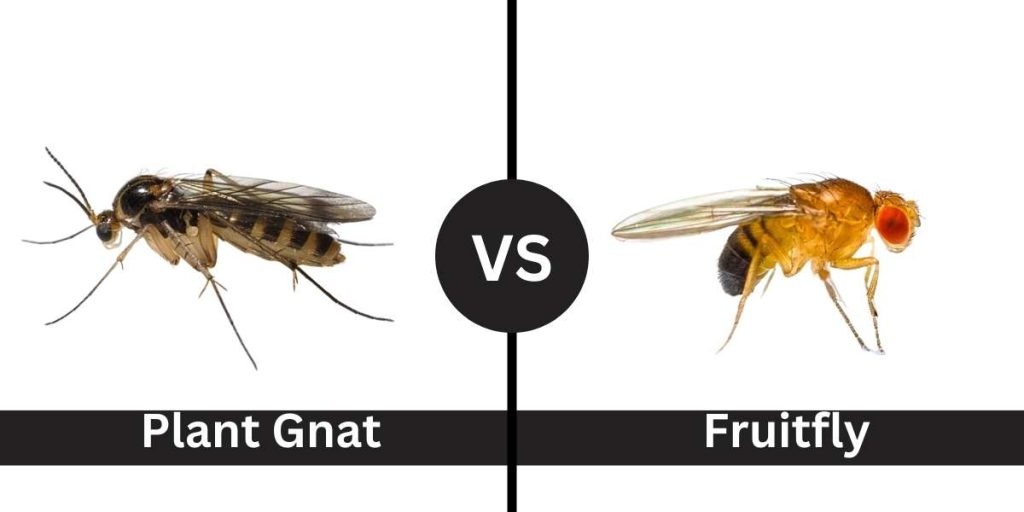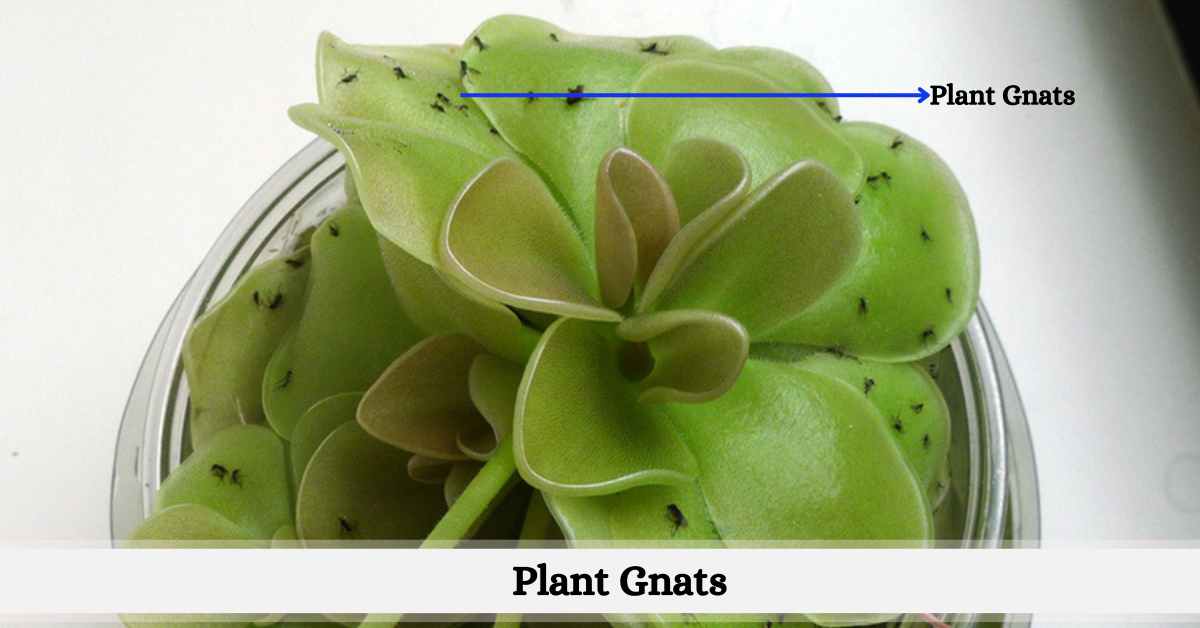Should you be experiencing a gnat problem, you might have observed them congregating near your indoor plants. The most prevalent kind of gnats around houseplants are fungus gnats. Fungus plant gnats can harm your plants even though they do not bite humans. Continue reading for expert advice on how to drive these bothersome insects away and avoid gnat infestations.
Introduction
Fungus gnats, commonly known as plant gnats, are small flying insects that belong to the families Sciaridae and Mycetophilidae. These pests are often found in and around houseplants, gardens, and greenhouses, where they can become a nuisance for plant enthusiasts. Adult gnats are typically dark-colored and have long legs, resembling tiny mosquitoes. While adult gnats do not directly harm plants, their larvae can pose a threat. Fungus gnat larvae feed on organic matter in the soil, including the roots of young plants, causing damage and potentially hindering plant growth.
These larvae often flourish in the soil of potted plants. Large numbers of gnat larvae can significantly damage young plants and seedlings.
Plant Gnats vs Fruit Flies
Gardeners often confuses plant gnats with fruit flies. Here is a tabular comparison between between these two to avoid the confusion.

| Characteristic | Plant Gnats | Fruit Flies |
| Taxonomy | Usually refers to fungus gnats (Sciaridae) | Belong to the family Drosophilidae |
| Appearance | Small, slender insects with long antennae | Small, usually tan or brown, with red eyes |
| Habitat | Often found in soil, especially in moist conditions | Prefer fermenting or decaying organic matter, commonly found near fruits |
| Larvae Habitat | Larvae feed on organic matter in soil | Larvae develop in decaying fruits, vegetables, and other organic matter |
| Damage to Plants | Larvae may damage plant roots, especially in seedlings | Generally not harmful to plants |
| Attracted to | Moist soil, overwatered plants | Ripe or fermenting fruits, vegetables, and organic matter |
| Breeding Sites | Breeding occurs in damp, organic-rich soil | Breeding sites include decaying fruits, fermenting materials, and organic waste |
| Life Cycle | Egg, larva, pupa, adult | Egg, larva, pupa, adult |
| Lifecycle Duration | Can complete a life cycle in a few weeks | Typically completes a life cycle in 8-10 days |
| Control Methods | Managing soil moisture, using insecticidal soap or nematodes | Removing and properly disposing of overripe fruits, maintaining cleanliness |
| Common Species | Bradysia spp. (fungus gnats) | Drosophila melanogaster (common fruit fly) |
| Size | About 1/8 inch | About 1/8 inch |
Causes of Gnat Infestations

Plant gnats infestations can be attributed to several factors, often stemming from environmental conditions and cultural practices. Overwatering is a common cause, as the excess moisture creates a favorable environment for fungus gnats to thrive. The larvae of these pests feed on organic matter in overly damp soil, including plant roots, leading to potential damage and stress on the plants. Inadequate drainage and using heavy, water-retentive soil can exacerbate the issue.
Poor sanitation practices contribute to gnat infestations as well. Decomposing organic material, such as fallen leaves or plant debris, provides an ideal breeding ground for gnats. In indoor environments, overripe fruit or spilled beverages can attract adult gnats. Lack of proper air circulation and high humidity levels further support the development of gnat populations. To prevent and control gnat infestations, it is crucial to adopt practices such as careful watering, proper soil drainage, regular removal of debris, and maintaining a clean and well-ventilated environment for plants.
Some common things that attract fungus plant gnats include:
1. Overwatered Soil:
Fungus gnats thrive in excessively moist environments, making overwatered soil a prime attraction for them. Poor drainage or watering plants more than necessary creates conditions conducive to gnat infestations.
2. Organic Matter in Soil:
The larvae of fungus gnats feed on decaying organic matter in the soil, including dead plant roots and other decomposing materials. The presence of such material becomes a breeding ground for gnats.
3. High Humidity Levels:
Fungus gnats are attracted to high humidity environments. Indoor spaces with poor ventilation or areas where humidity is consistently elevated can encourage the proliferation of these pests.
4. Indoor Plants:
Houseplants provide an ideal habitat for fungus gnats, especially if the soil is consistently kept damp. The confined space and controlled environment indoors make it easier for gnats to establish and reproduce.
5. Decomposing Plant Debris:
Fallen leaves, dead flowers, or any decomposing plant debris left in the vicinity of plants create a favorable environment for fungus gnats. Regularly cleaning up and removing such material helps prevent infestations.
6. Overripe Fruit and Spilled Beverages:
In indoor environments, overripe fruits and spilled sugary beverages can attract adult fungus gnats. These food sources serve as additional incentives for gnats to inhabit and reproduce in the vicinity.
7. Lack of Air Circulation:
Stagnant air provides an optimal environment for fungus gnats. Poor air circulation, especially in enclosed spaces, contributes to the persistence of gnat infestations. Proper ventilation helps discourage their presence.
8. Warm Temperatures:
Fungus plant gnats are more active in warm conditions. Higher temperatures can accelerate their life cycle, leading to a quicker increase in population. Monitoring and controlling the temperature can be a factor in managing gnat infestations.
How to Get Rid of Plant Gnats Naturally

There are some natural methods to get rid of plant gnats easily both from indoor and outdoor plants. These natural remedial methods should be used according to the steps given below for their proper effectivity. These methods are taken from different gardeners experience by doing online survey. These includes:-
1. Apple Cider Vinegar Trap:
- Create a simple gnat trap by filling a shallow dish with apple cider vinegar.
- Add a few drops of dish soap to break the surface tension.
- Gnats are attracted to the vinegar but get trapped in the soapy mixture.
2. Cinnamon:
- Sprinkle ground cinnamon on the top layer of the soil.
- Cinnamon has antifungal properties and can deter adult gnats from laying eggs in the soil.
3. Diatomaceous Earth:
- Sprinkle food-grade diatomaceous earth on the soil surface.
- This natural powder is abrasive to insects but harmless to plants and pets. It can help control both larvae and adult gnats.
4. Homemade Gnat Repellent Spray:
- Mix water with a few drops of essential oils known for their insect-repelling properties, such as citronella, eucalyptus, or tea tree oil.
- Spray the mixture on the soil surface and around the affected plants to repel adult gnats.
5. Sticky Traps with Honey:
- Apply a thin layer of honey on yellow sticky traps.
- The sweet scent attracts gnats, and they get stuck on the traps.
6. Banana Peel Trap:
- Place a piece of overripe banana peel in a container.
- Cover the container with plastic wrap and poke small holes in it.
- Gnats are attracted to the banana scent but get trapped inside.
7. Mosquito Bits or Dunks:
- Use mosquito bits or dunks containing Bacillus thuringiensis var. israelensis (BTI).
- These biological agents kill gnat larvae in the soil without harming plants.
8. Vinegar and Dish Soap Spray:
- Mix equal parts water and white vinegar with a few drops of dish soap.
- Spray the solution on the soil surface to kill gnats and deter future infestations.
How to Get Rid of Plant Gnats (Chemically)

When dealing with persistent gnat infestations, chemical methods can provide effective and rapid control. However, it’s important to use these methods judiciously, following safety guidelines and considering potential impacts on the environment. Here are some chemical options for getting rid of gnats:
1. Insecticidal Soap:
- Insecticidal soaps are formulated with fatty acids and can be effective against soft-bodied insects like fungus plant gnats.
- Follow the product instructions for application, ensuring thorough coverage on the soil surface and plant foliage.
2. Pyrethrin-Based Insecticides:
- Pyrethrin, derived from chrysanthemum flowers, is a natural insecticide effective against adult gnats.
- Pyrethrin-based products are available in various formulations such as sprays, foggers, or aerosols.
3. Botanical Insecticides:
- Botanical insecticides, derived from plant extracts, can be an eco-friendly option.
- Neem oil, derived from the neem tree, is one such botanical insecticide effective against both larvae and adult plant gnats.
4. Bacillus thuringiensis var. israelensis (BTI):
- BTI is a biological larvicide that specifically targets the larvae of fungus gnats and mosquitoes.
- It is available in granular or dunk forms and can be applied to the soil according to the product instructions.
5. Systemic Insecticides:
- Systemic insecticides are absorbed by the plant, making them toxic to gnats when ingested.
- Imidacloprid is a common systemic insecticide available in various formulations like granules or soil drenches.
6. Permethrin-Based Products:
- Permethrin is a synthetic insecticide effective against adult gnats.
- It can be found in various forms, including sprays and concentrates.
7. Foggers or Aerosols:
- Insect foggers or aerosol sprays can be used to treat larger areas.
- Follow safety instructions carefully, and ensure proper ventilation during and after application.
Preventive Steps to Keep Gnats Out
Preventing gnat infestations involves adopting good cultural practices and creating an environment that discourages their presence. Here are some preventive steps to keep gnats out:
1. Proper Watering:
- Water plants only when the top inch of the soil is dry to the touch. Avoid overwatering, as moist conditions attract gnats.
- Use well-draining soil to prevent water accumulation.
2. Remove Standing Water:
- Eliminate any standing water in saucers, trays, or containers under plants.
- Ensure that outdoor areas do not have stagnant water, as it can serve as a breeding ground for gnats.
3. Keep Soil Clean:
- Regularly remove fallen leaves, dead plant material, and other debris from the soil surface.
- Gnats are attracted to decaying organic matter, so maintaining a clean environment helps deter them.
4. Use Yellow Sticky Traps:
- Place yellow sticky traps near plants, especially in indoor settings, to capture adult gnats and reduce their population.
5. Improve Air Circulation:
- Ensure proper ventilation by placing fans or opening windows to improve air circulation.
- Gnats prefer stagnant air, so keeping the environment well-ventilated can discourage their presence.
6. Natural Predators:
- Introduce beneficial insects such as predatory mites or nematodes to the soil to control gnat larvae.
- Encourage natural predators like spiders and predatory insects in outdoor gardens.
7. Avoid Overripe Fruit:
- Keep ripened fruits stored properly and discard overripe or rotting fruits promptly.
- Gnats are attracted to the sweet scent of decaying fruits.
8. Quarantine New Plants:
- Inspect new plants for signs of gnats or other pests before bringing them indoors.
- Quarantine new plants for a few weeks to ensure they are pest-free before integrating them with existing plants.
9. Use Beneficial Nematodes:
- Apply beneficial nematodes to the soil, which feed on gnat larvae and help control their population.
10. Monitor and Act Promptly:
- Regularly inspect plants for signs of gnats or any other pests.
- Take immediate action at the first sign of an infestation to prevent it from spreading.
Final Verdict
In conclusion, addressing and preventing gnat infestations in plants requires a holistic approach that combines natural, cultural, and, if necessary, chemical methods. Consistent and proper watering practices, maintaining a clean environment, and using natural remedies like neem oil or beneficial nematodes are effective in controlling both larvae and adult gnats. When considering chemical methods, it’s important to use them responsibly, following product instructions and considering potential environmental impacts. Regular monitoring of plants and prompt action at the first signs of an infestation contribute to successful gnat control. By adopting these comprehensive strategies, plant enthusiasts can create an environment that promotes plant health while minimizing the risk of plant gnats infestations.
FAQs
1. What attracts gnats to plants?
Gnats are attracted to moist environments, overwatered soil, and decaying organic matter. They are also drawn to the sweet scent of overripe fruits and beverages.
2. How can I naturally get rid of gnats in my plants?
Natural remedies include using apple cider vinegar traps, cinnamon on soil, diatomaceous earth, neem oil, yellow sticky traps, and beneficial nematodes. These methods are non-toxic and eco-friendly.
3. Can I use chemical methods to eliminate gnats?
Yes, chemical methods include insecticidal soaps, pyrethrin-based insecticides, botanical insecticides like neem oil, systemic insecticides, and BTI (Bacillus thuringiensis var. israelensis). Always follow product instructions and use them judiciously.
4. How do I prevent gnats in my plants?
Preventive measures include proper watering practices, removing standing water, keeping soil clean, using yellow sticky traps, improving air circulation, introducing natural predators, avoiding overripe fruit, quarantining new plants, using beneficial nematodes, and monitoring plants regularly.
5. Can gnats harm my plants?
While adult gnats do not harm plants directly, their larvae can feed on the roots, potentially causing damage and stress to the plants. Severe infestations may impact the overall health and growth of the plants.
6. Are there any natural predators for plant gnats?
Yes, natural predators include predatory mites, nematodes, and certain beneficial insects like spiders. These organisms can help control gnat populations in the soil.
7. How do I use yellow sticky traps to catch gnats?
Place yellow sticky traps near plants, and adult gnats will be attracted to the color and get stuck on the adhesive surface. This helps reduce the adult gnat population.
8. Are there any eco-friendly options to control gnats?
Yes, several eco-friendly options include neem oil, diatomaceous earth, beneficial nematodes, and yellow sticky traps. These methods are effective in controlling gnats without harming the environment.
References
“Fungus Gnats as Houseplant and Indoor Pests
How to Get Rid of Fungus Gnats in Houseplants Naturally (thespruce.com)


